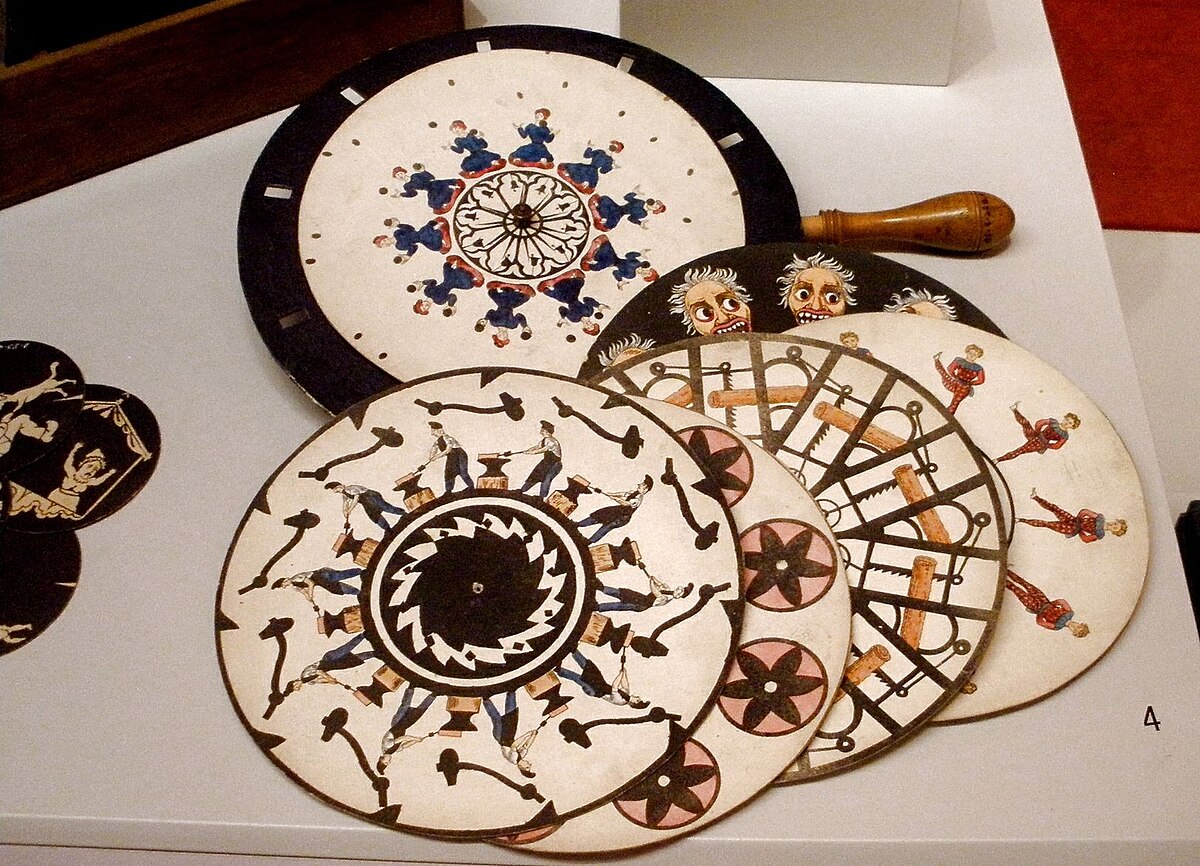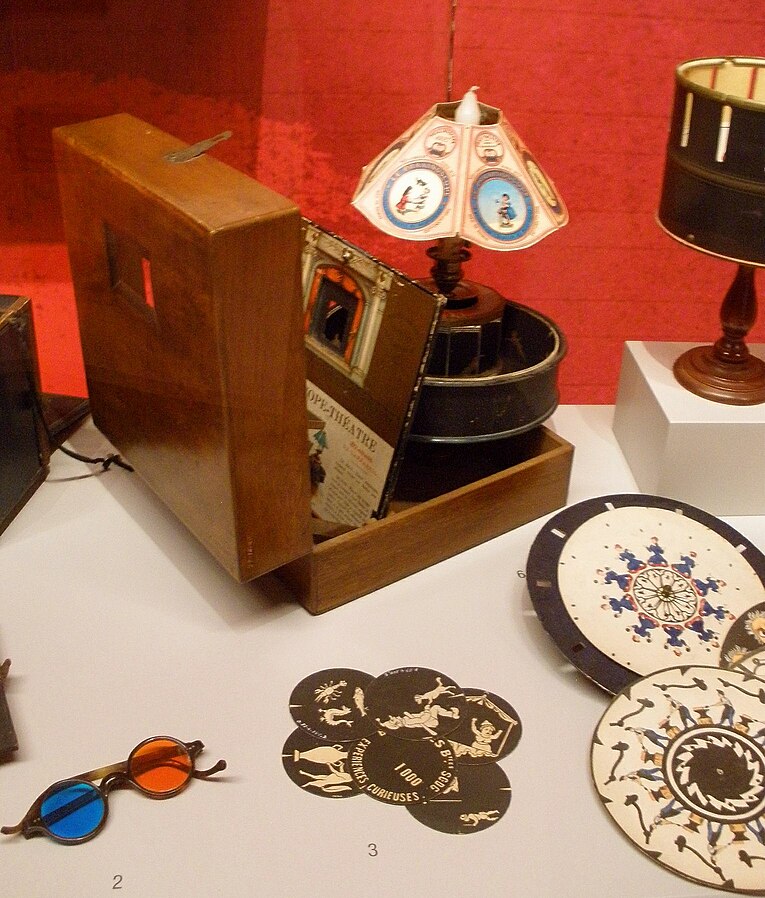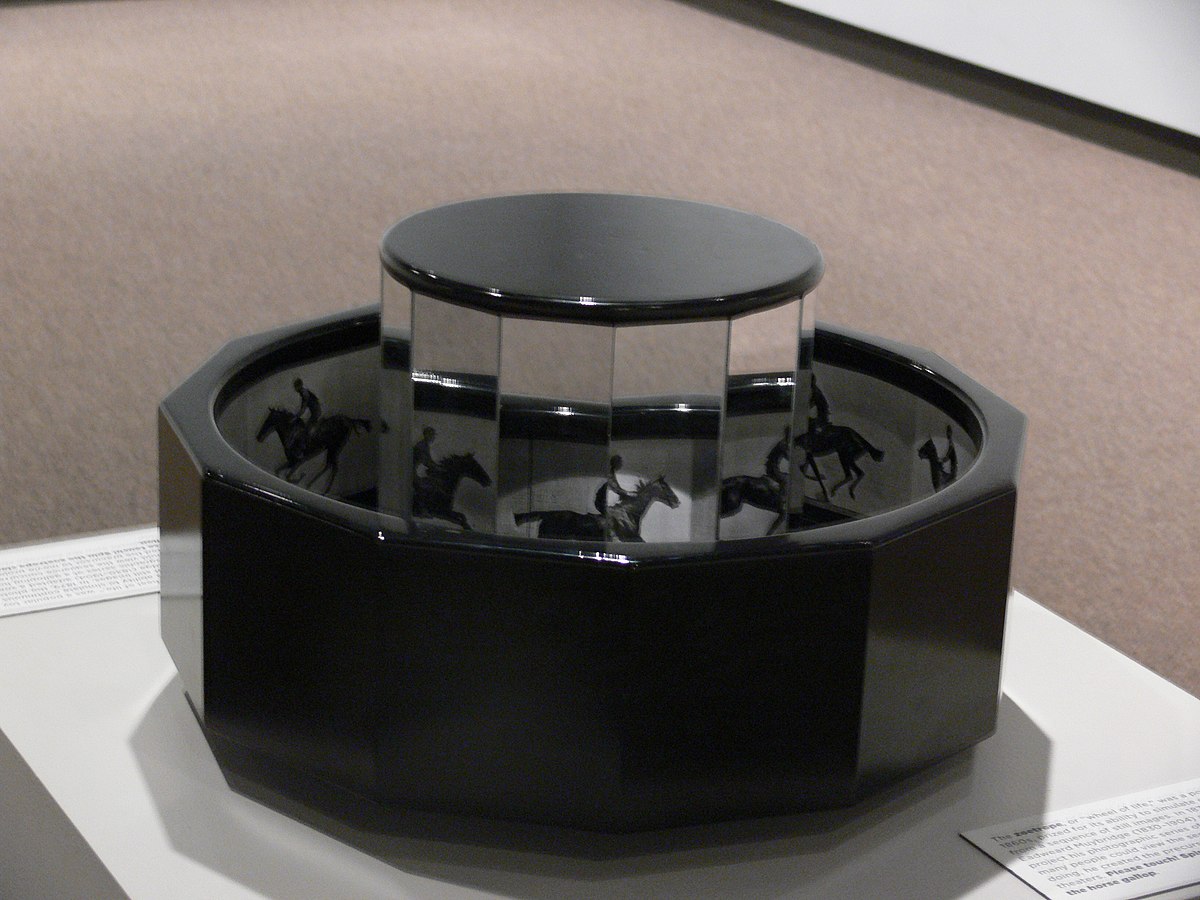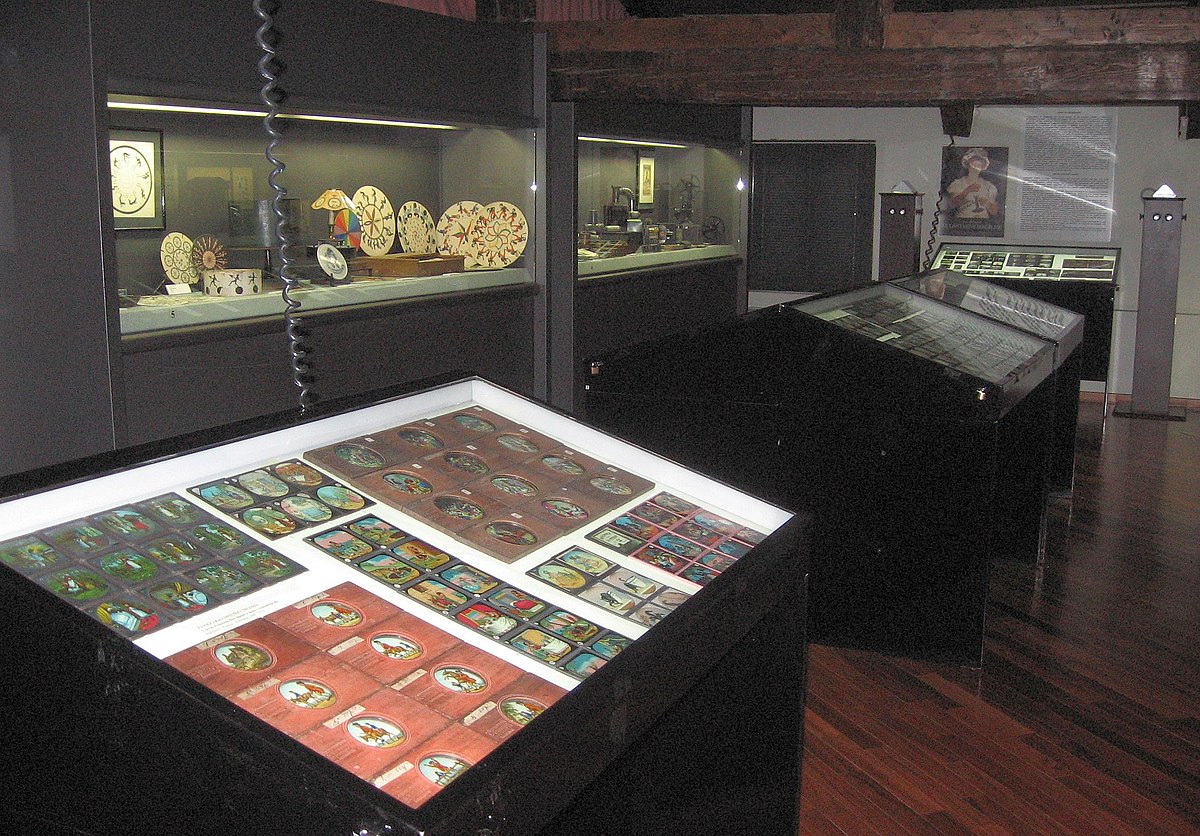Today, when people hear the word ‘animation,’ most will immediately think about digital effects and 3D graphics. Animation, at the present time, is a dazzling world of digital art and storytelling. But have you ever wondered how it all started? Let’s step back in time to explore the earliest forms of animation, like the thaumatrope, zoetrope, and phenakistoscope. These aren’t just fancy, tongue-twister names because they are the pioneering inventions that set the stage for the cartoons and animations we adore today.
In this article, we will uncover the origins and mechanics of these fascinating devices, shedding light on the humble beginnings of the animated world. Join us as we delve into the early days of animation and discover how it all began.
The Dawn of Animation: Thaumatrope
The thaumatrope is a cornerstone in the history of animation. This simple device, dating back to the early 19th century, is a fascinating example of how our ancestors unlocked the secrets of visual perception. It is a device that shows us the first steps taken toward the animation techniques we cherish today.
The Science Behind the Thaumatrope
At its heart, the thaumatrope is a marvel of optical illusion, relying on the phenomenon known as persistence of vision. This is the trick our eyes play on us when they retain an image for a fraction of a second after it disappears. The thaumatrope exploits this by twirling a card with a picture on each side (like a bird on one side and a cage on the other), creating the illusion that the bird is inside the cage. It’s a simple yet effective demonstration of how our eyes and brain can be tricked into seeing motion.
The Invention and Inventor
The thaumatrope was introduced by Dr. John Ayrton Paris, a British physician, as a scientific demonstration in 1824. Dr. Paris used it to illustrate the principle of persistence of vision, which was a groundbreaking insight at the time. While it was initially a scientific tool, it quickly became popular as a toy, fascinating people with its magical ability to blend images.
Design and Functionality
Creating a thaumatrope is surprisingly simple. It typically consists of a card with two different images on each side attached to strings or a stick. When you twirl the strings rapidly, the card spins, and the images on both sides blend into one due to the persistence of vision. This basic mechanism laid the groundwork for more complex forms of animation.
Impact on the Development of Animation
The thaumatrope’s significance in animation history cannot be overstated. It was one of the first tools to show how images could be manipulated to create the illusion of motion. This concept paved the way for subsequent innovations like the zoetrope and the phenakistoscope, eventually leading to modern animation and film.
Thaumatropes in Modern Times
Today, the thaumatrope is often revisited in classrooms and art projects, serving as an educational tool to explain basic principles of animation and vision. Its principle also finds application in modern cinematography, where similar techniques are used to create seamless transitions and effects.
The Zoetrope: Bringing Sequences to Life
The zoetrope, a step beyond the thaumatrope, marks a significant advancement in the world of animation. Invented in the 1830s, it offered a more dynamic and engaging way to simulate motion. Unlike the thaumatrope’s simple two-image flip, the zoetrope created an illusion of movement through a series of sequential images. This cylindrical device captivated audiences of its time and is a fascinating artifact in the history of animation.
The Evolution of the Zoetrope
The zoetrope, derived from Greek words meaning “wheel of life,” evolved from earlier devices like the phenakistoscope. It was designed to be more social and accessible, allowing multiple viewers to experience the animation simultaneously. The device consists of a cylinder with slits cut vertically in the sides. Inside, a series of images on a strip of paper show phases of motion, like a galloping horse or a dancing figure.
How the Zoetrope Works
The magic of the zoetrope lies in its operation. When the cylinder is spun, viewers look through the slits at the images on the opposite side. As the zoetrope rotates, the slits create a rapid succession of images, similar to a flipbook. This creates the illusion of the images moving or performing an action, a phenomenon that again leverages the persistence of the vision principle.
Impact and Influence
The zoetrope wasn’t just a popular Victorian toy; it was a milestone in animation and visual storytelling. It demonstrated the potential of sequential images in creating a narrative and laid the groundwork for motion pictures. Its principles are still used in modern animation, particularly in the understanding of how to depict movement and action sequences.
Zoetrope in the Modern Era
Today, the zoetrope is not just a historical curiosity but a source of inspiration and education. Contemporary artists and filmmakers sometimes revisit the zoetrope to create stunning visual effects and pay homage to the art form’s roots. It’s also used in educational settings to teach students about the basics of animation and motion perception.
The Phenakistoscope: A Leap Forward
The phenakistoscope represents a pivotal moment in the history of animation, marking a leap forward from its predecessors. Invented in 1832, this device not only entertained but also expanded our understanding of how motion could be captured and represented. The phenakistoscope took the principles of the zoetrope and thaumatrope a step further, offering a more sophisticated approach to creating an illusion of movement.
Invention and Design
The phenakistoscope was the brainchild of Belgian physicist Joseph Plateau. He designed this unique device based on the principle of persistence of vision, similar to the thaumatrope. It consists of a disc with radial slits around the edge and a series of sequential images drawn around it. When spun in front of a mirror and viewed through the slits, the images appeared to move.
How the Phenakistoscope Works
The key to the phenakistoscope’s magic lies in its operation. As the disc spins, the viewer looks through the slits at the disc’s reflection in a mirror. This creates a rapid succession of images, similar to the zoetrope, but with a crucial difference: the phenakistoscope allowed for smoother and more detailed animations, thanks to its disc-based design and use of a mirror.
The Phenakistoscope’s Contributions to Animation
The phenakistoscope helped to further the understanding of how the eye perceives a series of still images as continuous motion. This understanding was crucial for the development of later animation techniques and the eventual creation of motion pictures.
Modern Applications and Legacy
While the phenakistoscope itself is no longer in common use, its principles continue to influence modern animation and film. It’s often revisited in educational contexts as a tool to teach the fundamentals of animation. Furthermore, the phenakistoscope has inspired contemporary artists and animators, who appreciate its simplicity and effectiveness in creating an illusion of motion.
Other Early Forms of Animation
In addition to the thaumatrope, zoetrope, and phenakistoscope, there were several other early forms of animation that played a significant role in the development of this art and technology. Here are some noteworthy examples:
- Praxinoscope (1877): Invented by Charles-Émile Reynaud, the praxinoscope improved upon the zoetrope by using a series of mirrors in the center of the cylinder instead of slits. This allowed for a clearer and less distorted view of the animation.
- Flip Book (1868): Also known as a kineograph, the flip book is a collection of images on separate pages that create the illusion of motion when the pages are rapidly flipped through. This was one of the simplest and most accessible forms of animation.
- Magic Lantern (17th century): Preceding the cinematograph, the magic lantern was an early type of image projector using painted images on transparent plates, often animated by hand or small mechanisms.
- Mutoscope (1894): Similar to a flip book, the mutoscope worked on the principle of a rotating drum turned by a hand crank. The drum had a series of images on it that would simulate motion when turned quickly.
- Émile Cohl’s Fantasmagorie (1908): Often credited as one of the earliest examples of traditional hand-drawn animation, Cohl’s “Fantasmagorie” is a landmark in animation history, showcasing a style that would become standard in the animation industry.
- Stop Motion Animation (late 19th century): This technique involved photographing an object as it’s moved in small increments, creating the illusion of motion when the series of frames is played as a continuous sequence.
Each of these early forms of animation contributed to the development of the industry, paving the way for the complex techniques used in modern animation. They reflect the human fascination with creating the illusion of life and movement, a pursuit that continues to evolve with technology.
The Legacy of Early Animation Devices
Early animation devices, from the thaumatrope to the mutoscope, laid the foundational stones for the vibrant world of animation we see today. They were not just fleeting novelties but also stepping stones that led to the development of cinema and modern animation techniques.
Technological Breakthroughs and Conceptual Innovations
Each early animation device contributed a unique aspect to the understanding of motion and perception. The thaumatrope introduced the persistence of vision, the zoetrope and praxinoscope brought sequential motion to life, while the phenakistoscope and mutoscope refined the portrayal of realistic movement. Collectively, these devices broke new ground in visual storytelling, allowing creators to experiment with and understand the nuances of motion portrayal.
Influence on Modern Animation and Film
The principles discovered and the techniques developed through these early devices are still evident in modern animation and film. Techniques like stop-motion animation, frame-by-frame animation, and even the basic principles of cinematography can trace their roots back to these early inventions. Understanding how to create the illusion of motion has been fundamental in evolving the animation techniques we see today in both 2D and 3D formats.
Educational Value and Artistic Inspiration
These early devices are not just historical artifacts but continue to serve as valuable educational tools. They offer a tangible connection to the history of animation, helping students and enthusiasts understand the evolution of the art form. Furthermore, they inspire contemporary artists and animators, who often pay homage to these early techniques in their work, either through direct reference or by incorporating similar principles in digital formats.
Revival and Nostalgia in Popular Culture
There’s a growing interest in the revival of these early animation techniques, driven by nostalgia and an appreciation for the tactile, hands-on experience they offer. This resurgence is evident in various forms, from art installations to film segments that use traditional animation methods as a stylistic choice.
Conclusion
The earliest forms of animation reveal not just a history of technological innovation but a story of human creativity and curiosity. From the simple spinning of a thaumatrope to the more complex mechanisms of zoetrope and phenakistoscope, each invention paved the way for the next, contributing to what we know as modern animation.
These early devices were not just novelties but also the building blocks of an art form that continues to enchant and entertain many people. As we appreciate the advanced animations of today, it’s inspiring to look back at these humble beginnings, reminding us that great advancements often start with simple ideas. We hope this article helped you learn more about the first forms of animation. From the early forms of animation to contemporary works, the medium has evolved to do more than entertain. In How Do Animations Address Complex Social Issues?, we delve into how modern animations are used as powerful tools for social commentary, addressing and highlighting a range of significant societal concerns.





